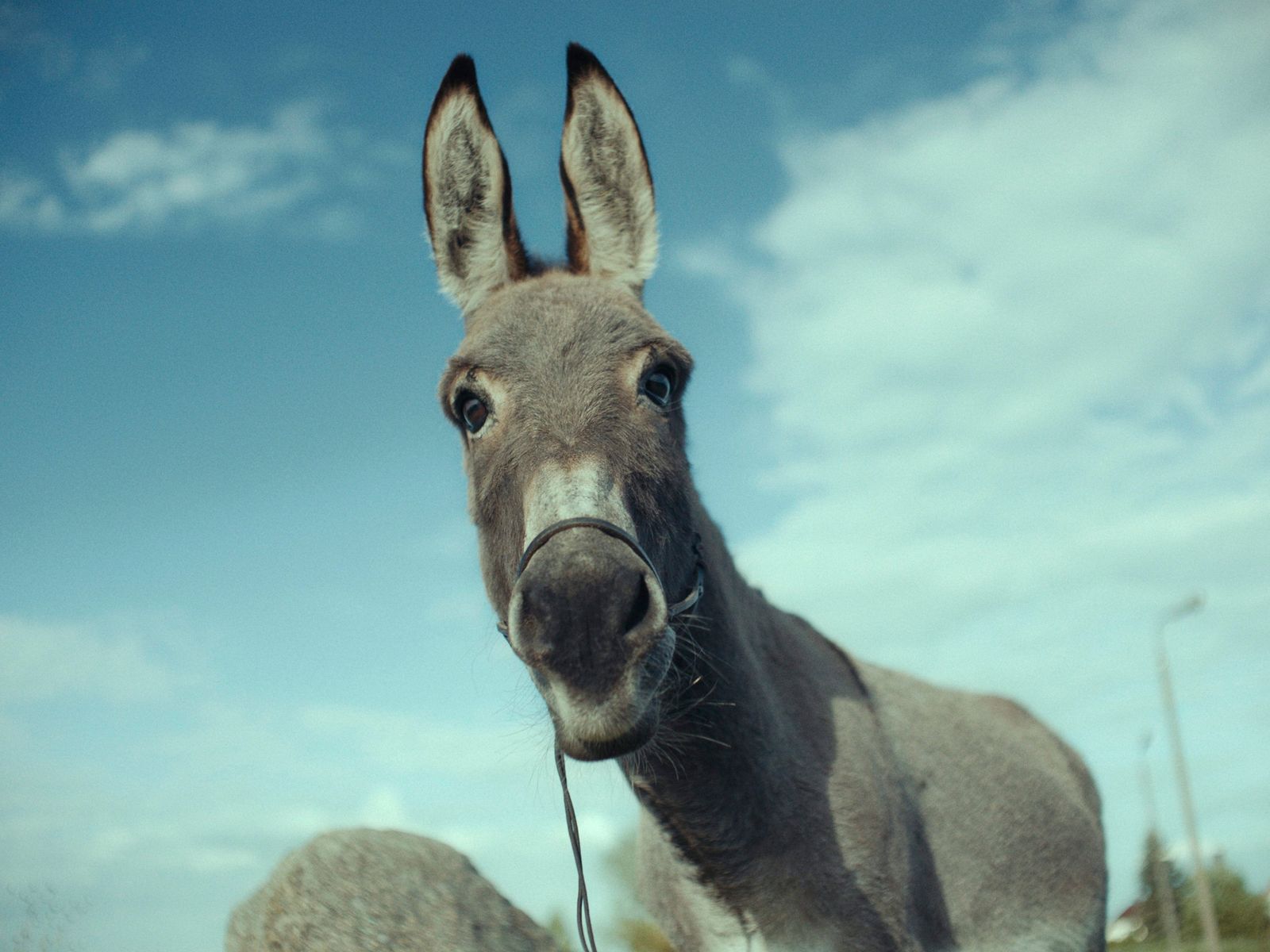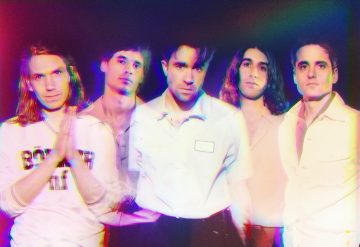★★★★☆
A tragic portrait of rural Poland and a cautionary tale on our relationship with animals, this is one little donkey’s journey across two countries and the friends he makes along the way. Here’s our EO review.
In a very limited and specific way, 2022 was an excellent year for donkeys on film. A full 30% of this year’s Best Picture line-up serves as star vehicles for our furry, oft-encumbered friends, and EO – Poland’s entry in the Best International Feature category – contains more donkey-based mischief than most.
In most other ways, donkeys have had a terrible year at the pictures. Spoiler alert for both Banshees of Inisherin and Triangle of Sadness but both films finish with 100% fewer donkeys than they started with. And though EO might not end with its protagonist choking on a man’s fingers or having its head caved in by a posh fellow with a brick, little EO has exactly the sort of time 50 years of adverts from The Donkey Sanctuary would have us come to expect.
Beginning his journey in a trippingly-shot circus display, EO puts us right behind the eyes of our hero from the off. And from his point of view, the world’s a pretty bleak place. There’s kindness to be found for sure, from his old circus trainer who tracks him down to give him a snack to the vet who nurses him back to health following a traumatising accident. But EO’s mission statement seems to be to show the world as it is – and under the neutral gaze of a donkey, it doesn’t come out well.
READ MORE: ★★★★☆ The Banshees of Inisherin review | An absurdly amusing parody of male friendship
From a craft perspective, the donkey-wrangling alone is immediately Oscar-worthy. EO is actually played by six different donkeys (Tako, Ettore, Hola, Marietta, Mela, and Rocco, for the autograph hunters) who director Jerzy Skolimowski and animal handler Agata Kordos have somehow convinced to cross bridges, pull carts and annoy horses with impeccable comic timing. Apparently, each donkey does have its own personality and peculiar traits – watching the film, the effect is seamless.
There’s not much of a plot to be found in EO – probably inevitable, given the unpredictability of its lead actor(s). Instead, the film plays out like an odyssey, with EO gently wandering from one uniquely equine traumatic event to the next. At just 87 minutes, the loose storytelling just about carries the film through, the sight of a very fuzzy-looking donkey doing wonders to keep us invested. The stripped-back structure transfers to the rest of the film well: simple but beautiful cinematography is framed by an application of both soundtrack and dialogue one can only describe as sparse. It gets its point across well: donkeys don’t see the world in a wide shot. Ditto for music.
Skolimowski has said he’s most interested in the moral greys found in EO – from the different sides of humanity on display to the ways they interact with our animal observer. But whatever the intention, EO possesses a nihilism that’s difficult not to find depressing. In EO’s eyes, acts of charity aren’t beautiful; they’re confusing. A party isn’t a celebration but alarming, and cruelty bounces off him just as easily as a kind word. The human world is a hard place for a donkey. Maybe The Donkey Sanctuary had it right after all.
EO arrives in cinemas on 3 February





